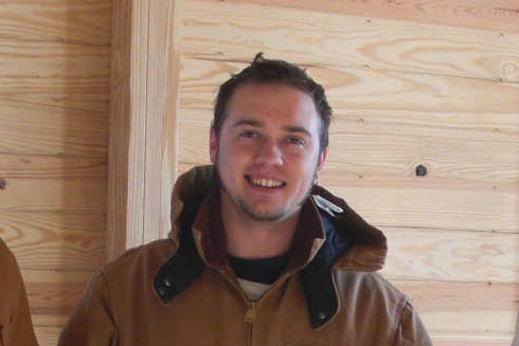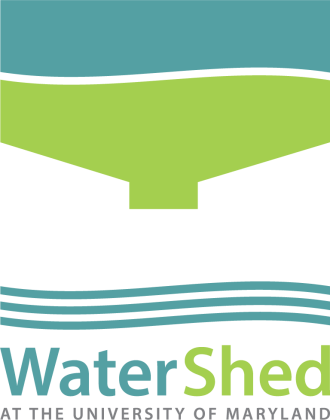
Zachary Klipstein, Team Member, in WaterShed While Under Construction
Photo Credit: Amy Gardner
Zach Klipstein has been working with his hands for as long as he can remember. He has a list a mile long of projects he’s worked on with his dad in his hometown of Cumberland, Maryland: from building a garage to fixing the car, to modifying an old lawnmower. Over the years, his parents have been an endless source of encouragement, teaching him to trust his intuition, problem solve, use his creativity, and build. So it’s no wonder that Zach, who is pursuing his Master in Architecture (’12), is an integral part of the WaterShed team.
Zach has been working on WaterShed since the late summer of 2010. While he has been involved in much of the exterior building of the house, he is master of the pergola – the outdoor structure that shelters WaterShed’s garden deck – painstakingly designing and planning the exterior rooms that will provide the homeowner with many years of enjoyment. He has also been very involved in the design of the custom furniture built just for WaterShed. This includes a bed that doubles as a conference table, the perfect complement to WaterShed’s live/work environment. Regardless of the project, Zach has thrived on the design process and has enjoyed tackling the changes and challenges of Maryland’s Solar Decathlon entry. Below Zach talks about the design process, must-haves on the job site (there are many), and the life-changing experience of WaterShed.
What has been your personal WaterShed moment so far?
ZK: When we first started drafting the plans for WaterShed, numerous designs were drawn and thought through and drawn again. It was not until we actually went to build some things that the true problem-solving skills came into play. Frankly, numerous things that were drawn had to be reworked in the field to accommodate a design, aesthetic, or functional change and the ability of one to be able to think on the spot of how to solve a problem is key. Seeing how this process works in my field was very rewarding and an excellent experience for my future career as an architect.
Talk about an unexpected, amazing, frightening, or unlikely experience while working on WaterShed…
ZK: The day the pergola frame arrived was a very rewarding and amazing experience. It was also very frightening too because I was paranoid that something was measured wrong or the frame would not fit, but rest assured, everything was good and ran smoothly.
It’s important to mention that without the help of our mentors we would not even come close to being able to pull off this venture. Our team would be at a loss without their knowledge, skill, and patience. The learning opportunity has been a once-in-a-lifetime experience that I will carry with me into the professional design field.
What has been your most important learning experience on the project?
ZK: For most of us on the team, I feel that the opportunity to take an idea – a concept of a house as an ecosystem that functions as a vessel to promote the conservation of water and turning it into a tangible structure that you can touch, feel, smell, and inhabit – says it all. As a team we took an idea that was drawn on a piece of paper and turned it into this amazing piece of architecture. Most professionals cannot say they have touched as many aspects of a project as each student has on WaterShed. The educational experience is invaluable.
Has working on WaterShed influenced your career path?
ZK: It has always been my dream to design structures that incorporate sustainable technologies into the very first parts of the design process. This project has only emphasized this goal. I intend to start a design/build firm that does just that as soon as a pass all of my architecture registration exams.
When people come to visit WaterShed on the Mall in September, what do you hope they will take away from the experience?
ZK: In my eyes, it is our main goal to educate the public about water and how much of a precious resource it really is. While it is true the competition is primarily geared towards a solar audience, we have taken it upon ourselves to not only satisfy this aspect of the competition but to also incorporate the water conservation idea into our concept as well. We hope the public takes advantage of the knowledge they can obtain from our findings and use it to improve the way they live.
What do you always have with you on the job site?
ZK: Pair of Klein tools 6” needle-nose pliers, Stanley Bostitch nail set, various Estwing hammers, windowbar, 1” Stanley Chisel, Stanley tape measure, a carpenters pencil, my old and faithful red camouflage Maryland hat (it really needs washing), numerous articles of Carhartt merchandise, a positive attitude, an empty wallet, and a pocket Bible (that I need to read more often).
